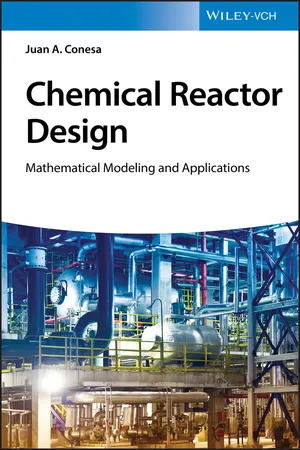
- English
- ePUB (mobile friendly)
- Available on iOS & Android
About This Book
A guide to the technical and calculation problems of chemical reactor analysis, scale-up, catalytic and biochemical reactor design Chemical Reactor Design offers a guide to the myriad aspects of reactor design including the use of numerical methods for solving engineering problems. The author - a noted expert on the topic - explores the use of transfer functions to study residence time distributions, convolution and deconvolution curves for reactor characterization, forced-unsteady-state-operation, scale-up of chemical reactors, industrial catalysis, design of multiphasic reactors, biochemical reactors design, as well as the design of multiphase gas-liquid-solid reactors. Chemical Reactor Design contains several examples of calculations and it gives special emphasis on the numerical solutions of differential equations by using the finite differences approximation, which offers the background information for understanding other more complex methods. The book is designed for the chemical engineering academic community and includes case studies on mathematical modeling by using of MatLab software. This important book: - Offers an up-to-date insight into the most important developments in the field of chemical, catalytic, and biochemical reactor engineering
- Contains new aspects such as the use of numerical methods for solving engineering problems, transfer functions to study residence time distributions, and more
- Includes illustrative case studies on MatLab approach, with emphasis on numerical solution of differential equations using the finite differences approximation Written for chemical engineers, mechanical engineers, chemists in industry, complex chemists, bioengineers, and process engineers, Chemical Reactor Design addresses the technical and calculation problems of chemical reactor analysis, scale-up, as well as catalytic and biochemical reactor design.
Frequently asked questions
Information
Part I
Reactor Analysis, Design, and Scale‐up
1
Nonideal Flow
1.1 Introduction
1.2 Residence Time Distribution (RTD) Function
Table of contents
- Cover
- Table of Contents
- Preface
- Nomenclature
- Part I: Reactor Analysis, Design, and Scale‐up
- Part II: Catalytic, Multiphase and Biochemical Reactor Design
- Index
- End User License Agreement